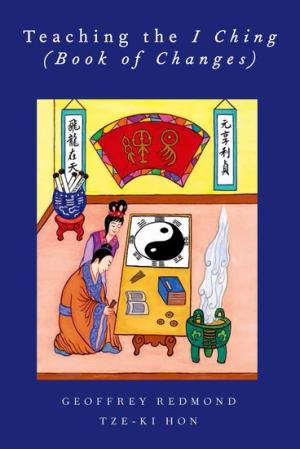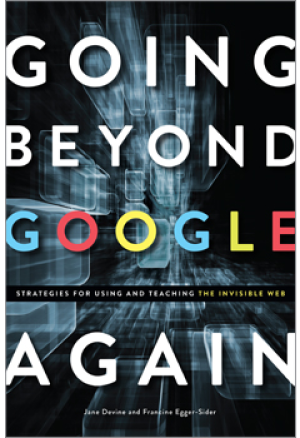Resources by Harold C. Washington

The I Ching (or Yijing, Book of Changes) is one of the great works of world literature, but at first approach it can be perplexing at best. Geoffrey Redmond is a scholar of textual criticism and Asian spiritual traditions (he is also an MD). Tze-ki Hon, professor of history at the State University of New York at Geneseo, is a specialist in Chinese cultural history and classical Chinese thought, including the commentaries on the I Ching. Together these authors provide a judicious, illuminating account of this classic Chinese text. Teaching the I Ching is a valuable reference for scholars and students alike, and a superb sourcebook for teaching the I Ching at the undergraduate level. The authors trace the complex history of the I Ching’s development through three millennia, beginning with its Bronze Age origins in divinatory practices using yarrow sticks, precursors of the hexagrams of the traditional work. The earliest texts, preserved on bound bamboo strips, are first attested to around 300 BCE, but they hearken back to much earlier exemplars. The first authoritative collection, known as the Zhouyi, was composed in the Western Zhou period, 1046-771 BCE. An expanded version of this text was “canonized” by royal decree in 136 BCE, deemed as a classic under the authority of Confucian tradition. In the modern era, archaeology has turned up many early witnesses to the text, largely from ancient tombs. These have spurred new assessments of the textual tradition. In the modern era the I Ching has met varied fates. It came under sharp criticism at the hands of the Chinese “Doubting Antiquity Movement” of the 1920s. Mao Zedong banned the text, at times. During the Cultural Revolution the use of the I Ching for divination was widely regarded as a superstitious, “feudal” practice. Yet by the 1980s and 1990s a popular movement called “Yijing Fever” widely introduced new mass populations to the I Ching. There is also a survey of the reception of the I Ching in the West, from Christian missionaries encountering the work in the sixteenth to nineteenth centuries, to C. G. Jung’s engagement of the text, to the I Ching’s (dubious, perhaps?) status as a countercultural icon. The book gives special attention to the role of women in the I Ching, especially the subordination of the feminine in the traditional Chinese yin/yang duality. There are also valuable chapters on the cosmology and ethical principles of the I Ching. The book closes with an extensive “Readers Guide” to the I Ching, describing the standard translations of the work, bilingual editions, concordances and reference works, online versions of the I Ching, and other digital resources. There is also a working orientation to the structure of the text, with instructions on how to consult the I Ching, should one wish to pose a question to this ancient, still vital text.

This volume follows up on the authors’ 2009 book, Going Beyond Google: The Invisible Web in Learning and Teaching (New York: Neal-Schuman, 2009). It is a welcome addition, given the rapid pace at which information technology is transforming higher education. “Invisible Web” is the term for the huge amount of Internet information that is not accessible via Google, Bing, Yahoo, and so forth. It includes proprietary databases, institutional collections, corporate and government data banks, privately secured web sites, and increasingly, social media. Of the trillions of webpages in the World Wide Web, Google only comprehends perhaps 10 percent. The rest is “invisible” to search engines. Devine and Egger-Sider present a picture in which: (1) print reference materials are tacitly deemed obsolete, (2) most students in U.S. higher education have institutional access to high quality digital research materials, but (3) they are often unaware of these resources or make little use of them. A major OCLC study in 2010, for example, found “a decline in use of library Web sites, electronic journals, and online databases since 2005,” a trend that has not yet reversed (31). The authors’ analysis of dozens of studies on student research identifies three major traits: “over-reliance on Google and other major search engines, a tendency to favor time over content, and an overwhelming preference for convenience” (38). The over-reliance on Google is especially troubling because of the rapid growth in automatically “personalized” searches, often unbeknownst to the user. Search engines filter the results of searches based on users’ previous queries. Over time, the search utility constructs dense profiles of users’ interests, generating results that are most likely to be “preferred.” This works well for advertising, but it is disastrous for critical inquiry. Personalized searches are liable simply to reinforce researchers’ biases. Devine and Egger-Sider make a strong case for teaching students about the Invisible Web, beginning as early as high school. They include a chapter describing approaches for introducing students to the Invisible Web, including a two-stage sample curriculum: (1) Web-Searching Basics, and (2) Presenting the Invisible Web, plus advice about teaching the Invisible Web with graphics and social media. The final sections of the book provide a working orientation to the Invisible Web, numerous examples of good resources, and some thoughts about the future of the Invisible Web. This book is valuable in its own right as a reference work and resource guide. Every chapter comes with extensive reference lists; there is also a collection of selected additional readings. Chapter 6, “Looking Inside the Invisible Web: A Sampler,” sets out the web addresses and some commentary for a basic research tool kit, recommended tools for specialized research, and an illustrative list of resources for highly advanced research.